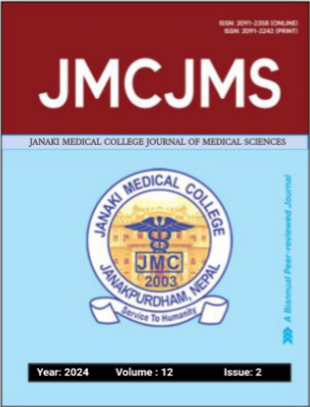Optimizing Cardiovascular Performance Following Myocardial Infarction: The Significance of Nitroglycerin in Regulating Blood Flow
DOI:
https://doi.org/10.3126/jmcjms.v12i02.68373Keywords:
Herschek-Bulkley fluid, Myocardial infarction, Nitroglycerin, Radially non-symmetric, Resistance to flowAbstract
Background & Objectives: Nitroglycerin, a potent vasodilator, is crucial in managing blood flow dynamics in patients recovering from Myocardial Infarction (MI). This research aims to comprehensively review the role of nitroglycerin in regulating blood flow and enhancing cardiovascular performance post-MI.
Materials and Methods: Blood flow was modeled as a Herschek-Bulkley fluid. The study derives expressions for various blood flow characteristics, including pressure, viscosity, resistance to flow, and wall shear stress. Pharmacological mechanisms of nitroglycerin, its effects on vascular function, and its role in mitigating ischemic events are explored.
Results: The findings indicated that blood flow increases with the height of stenosis. Nitroglycerin effectively dilates blood vessels, reducing peripheral vascular resistance and easing blood flow. Clinical applications, including administration routes, dosage regimens, and potential adverse effects, are discussed.
Conclusion: Nitroglycerin plays a pivotal role in managing blood flow post-MI by dilating blood vessels and reducing peripheral vascular resistance. This mechanism contributes to improved cardiovascular outcomes and symptom relief in patients recovering from MI. Understanding its multifaceted role is crucial for optimizing treatment strategies and enhancing patient care.
Downloads
Downloads
Published
How to Cite
Issue
Section
License
© JMCJMS, JMC, Janakpur, Nepal




